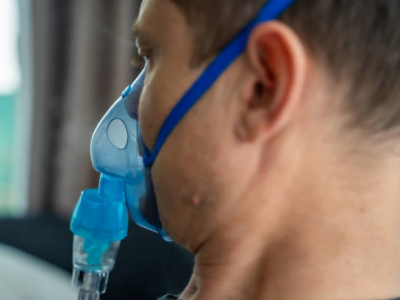Study: Meningitis vaccine associated with reduced rates of gonorrhea
Researchers in New Zealand report today in The Lancet that exposure to the outer-membrane vesical meningococcal B vaccine (MeNZB) was associated with reduced rates of gonorrhea in a retrospective case-control study. It's the first time a vaccine has shown any protection against the sexually transmitted infection.
The study was conducted among patients at sexual health clinics aged 15-30 years who were eligible to receive the MeNZB vaccine and were diagnosed with gonorrhea or chlamydia, or both, from 2004 to 2016. The three-dose vaccine was introduced in 2004 in response to an epidemic strain of the meningococcal B bacterium, and New Zealand offered the vaccine free to anyone under the age of 20 between 2004 and 2006. Researchers wanted to assess the vaccine's effectiveness against gonorrhea on the basis of ecological data suggesting that gonorrhea declined after the use of outer-membrane vesicle (OMV) meningococcal B vaccines in Cuba, New Zealand, and Norway.
Out of 24 sexual health clinics in New Zealand that were approached for data on patients with gonorrhea and chlamydia, 11 participated in the study. For the primary analysis, cases were those with confirmed gonorrhea only, and controls were those with chlamydia only. Co-infection was assigned as either a control or a case. Odds ratios comparing disease outcomes in vaccinated versus unvaccinated participants were estimated using multivariable logistic regression, yielding estimates of vaccine effectiveness.
Overall, there were 14,730 cases and controls: 1,241 gonorrhea cases, 12,486 chlamydia cases, and 1,002 co-infections. Vaccinated individuals were significantly less likely to be cases than controls (511 [41%] vs. 6,424 [51%]). After adjustments were made for sex, age, ethnicity, deprivation, and area, the effectiveness of the MeNZB vaccine against confirmed gonorrhea cases was estimated at 31%. Co-infection with chlamydia was associated with lower vaccine effectiveness (14%).
The authors note that while MeNZB was developed to control an epidemic and is no longer available, the same OMV antigen in MeNZB has been included in a new vaccine that targets a broad range of group B Neisseria meningitidis. "Based upon our results, assessment of this vaccine's potential effect on gonorrhea infection seems warranted," they write.
Given the emergence of gonorrhea strains that are increasingly resistant to the last-line antibiotic regimen, global health officials consider development of a vaccine against gonorrhea an important priority. The authors say modelling suggests a vaccine with 30% efficacy could decrease the prevalence of gonorrhea by more than 30% within 15 years.
Jul 10 Lancet study
G20 leaders pledge to fight antimicrobial resistance
The leaders of the G20 nations reaffirmed their commitment to combatting antimicrobial resistance (AMR) in a communique issued after their recent meeting in Hamburg, Germany.
In the document, which lays out the G20 response to a variety of global challenges, G20 leaders say they aim to implement national actions plans to tackle the spread of AMR in humans, animals, and the environment by the end of 2018, and pledge to promote the prudent use of antibiotics in all sectors. They also committed to raising public awareness about AMR, strengthening infection prevention and control efforts, improving understanding of how antimicrobials affect the environment, and ensuring access to affordable and quality antimicrobials.
As part of their commitment to combatting AMR, the G20 leaders also announced a new global body to oversee research and development of new drugs to address emerging antimicrobial resistance. The Global AMR Collaboration Hub will coordinate efforts to spur research into new antimicrobials, vaccines, alternative therapies, and diagnostic tools and encourage global involvement and investment. It will be open to all G20 countries, G20 guest countries, and non-government donors.
Jul 7-8 G20 Leaders' Declaration














